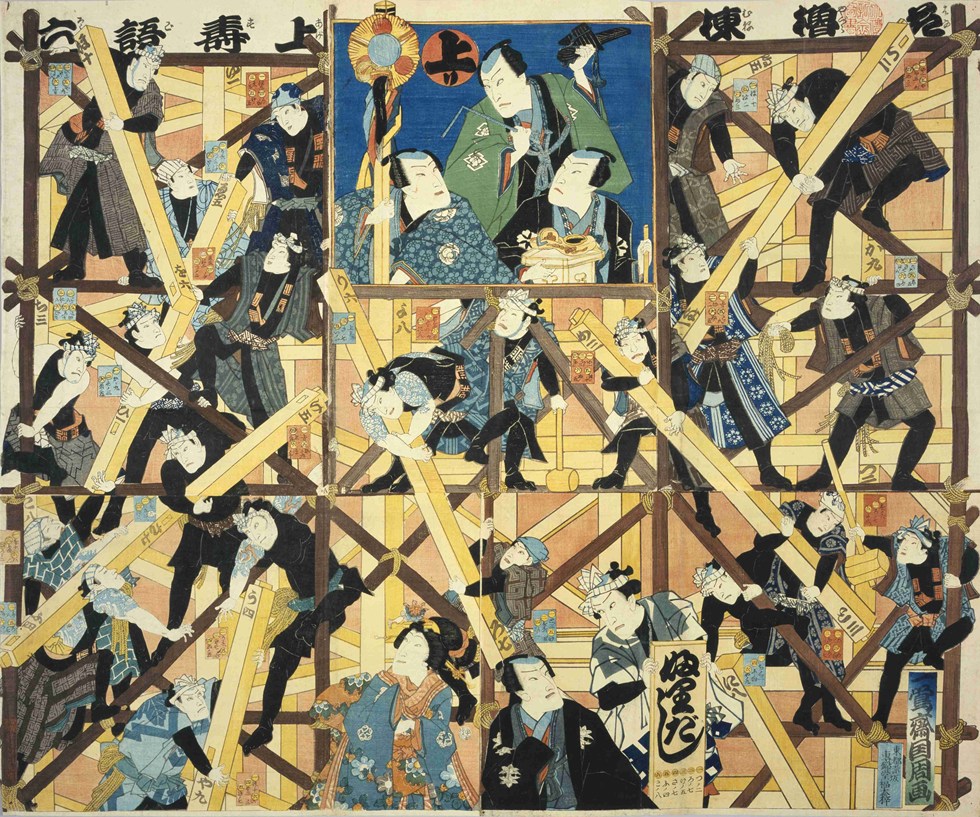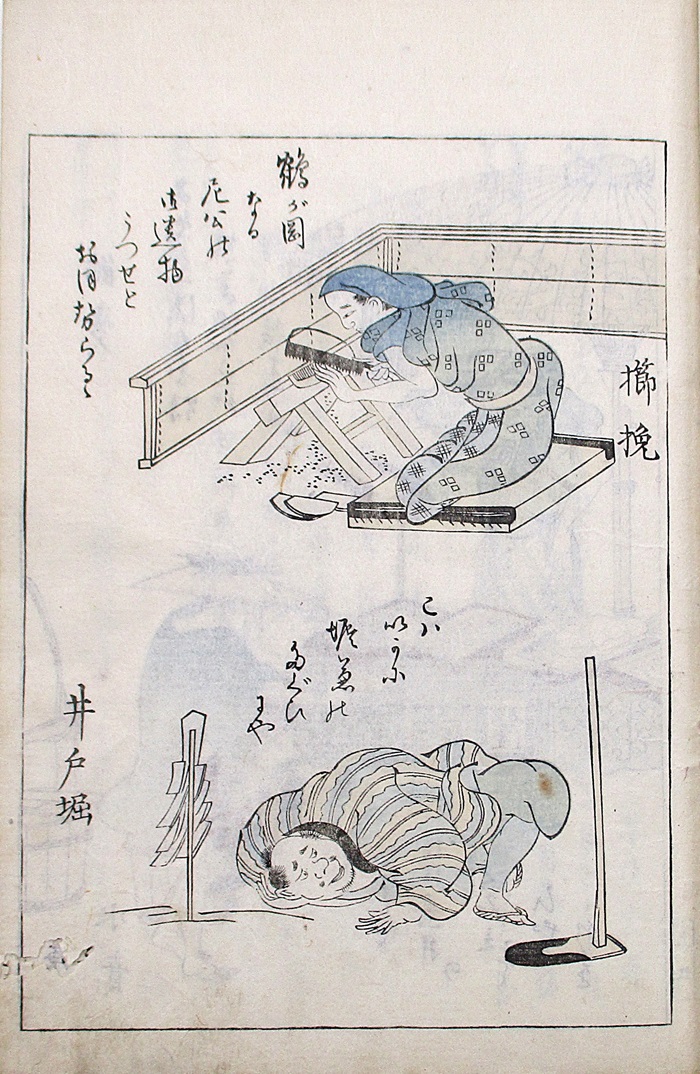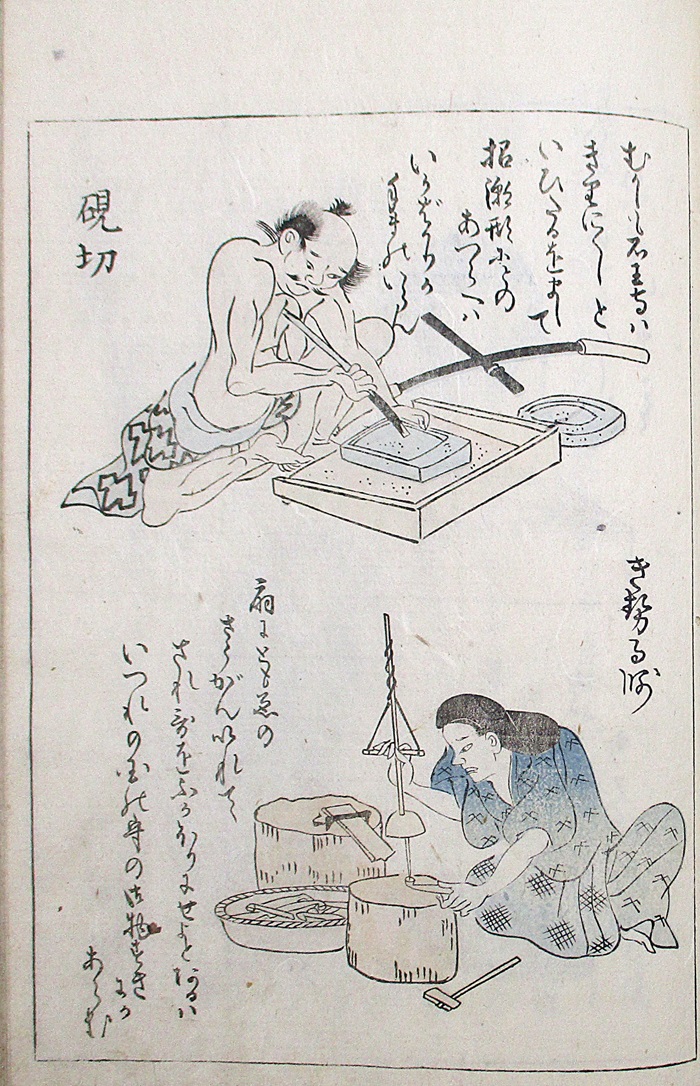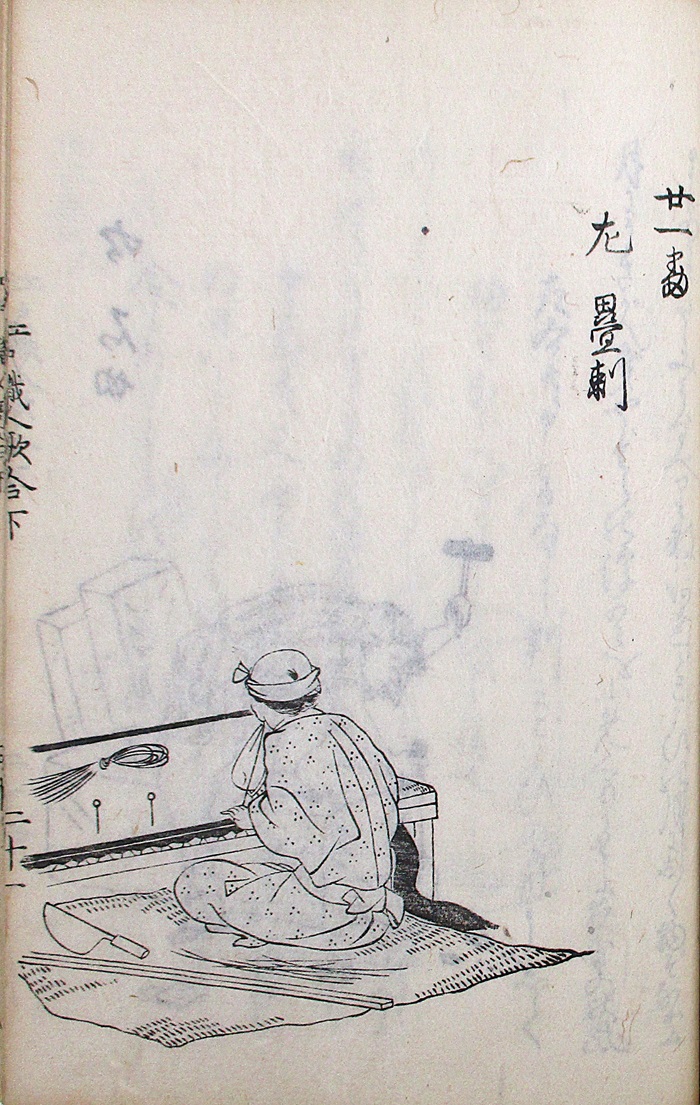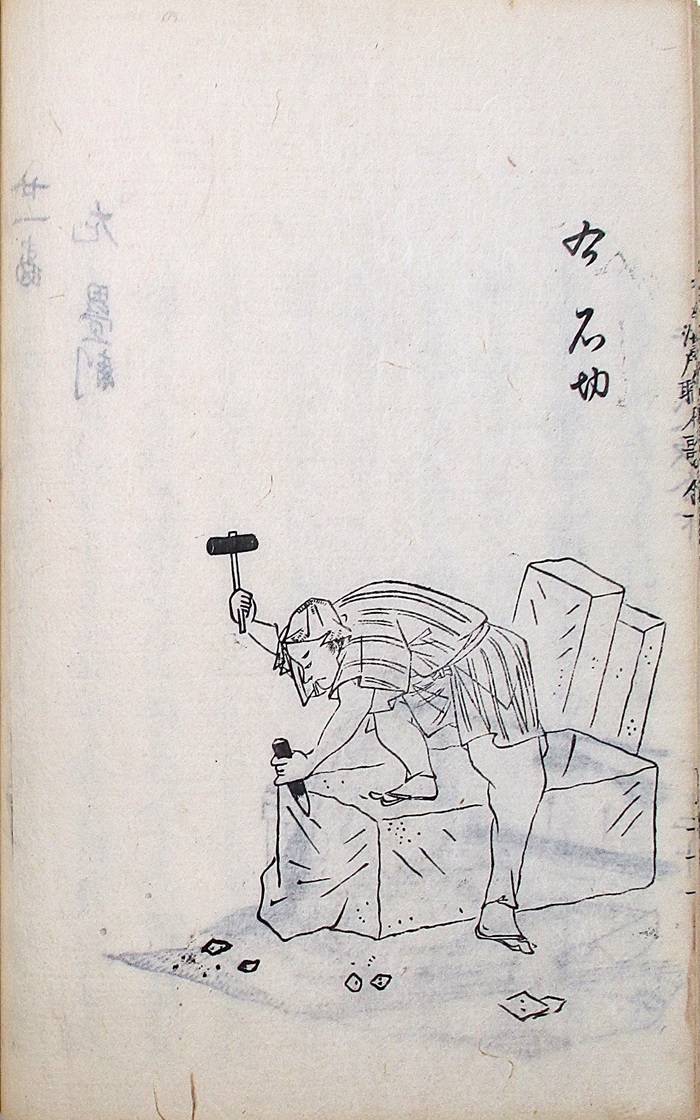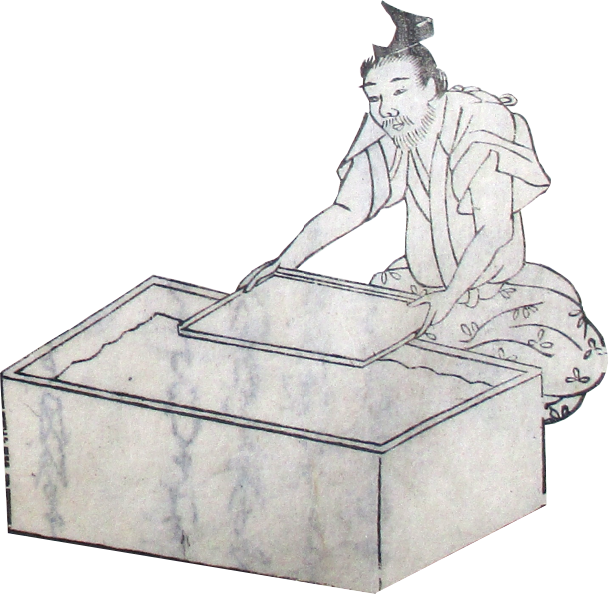
Residing and Using
Various Craftsmen
- Column
-
This is a depiction of a deshoku signboard calligrapher. Deshoku were itinerant artisans who went to their clients’ premises to carry out work. The signboard calligrapher traveled through Edo and the surrounding provinces, replacing the paper on signboards and repainting or rewriting them.
- Detailed Illustrated Map of the Northern Part of Nihonbashi, Uchikanda, Ryogoku and Hamacho
- Tokyo Shiryō Collection 0421-12イ
-
A sectional map of Edo known as a kiriezu, which divided the city into regions and depicted them in detail. This particular map shows the area east and west of present-day JR Kanda Station, spanning Chiyoda and Chuo wards. Many of the town names, such as Gofukuchō (Drapers’ Quarter) and Teppōchō (Gunsmiths’ Quarter), reflect the occupations carried out there.
-

- Ranking of Various Craftsmen
- Tokyo Shiryō Collection 870-30
-
This chart of the craftsmen working in Edo is presented in the style of a sumo ranking list. At the top rank were the carpenters and swordsmiths. Written in the margins outside the formal ranking are the tobi or construction workers, celebrated as stars among craftsmen for their valor in firefighting.
-

- Hanayagura Roof-Raising Sugoroku
- Tokyo Shiryō Collection 783-S1
-
A sugoroku board game depicting the raising of the roof of a new building. Popular kabuki actors of the time are portrayed in the guise of carpenters. Near the top center, just below and to the right of the finishing square, a carpenter is shown holding a tool called a sumitsubo, used for drawing straight lines.
-

- Pictures for Children Explaining Occupations relating to Construction No. 10: Carpenter
- Tokyo Shiryō Collection 086-6(27)
-
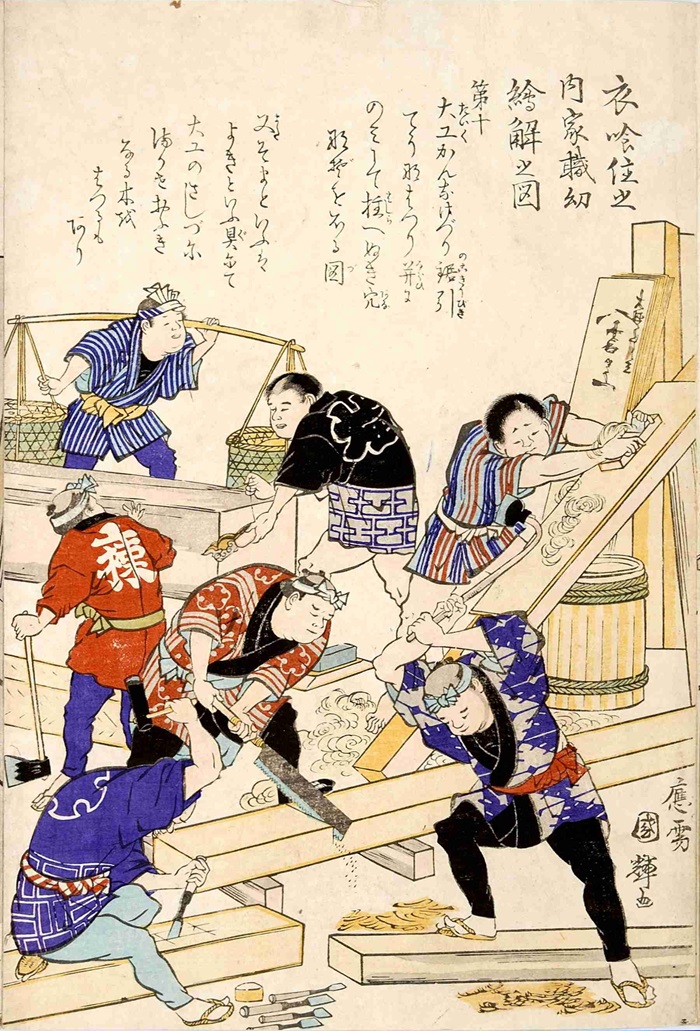
- Pictures for Children Explaining Occupations relating to Construction No. 1: Blacksmiths Casting
- Tokyo Shiryō Collection 086-6(32)
-
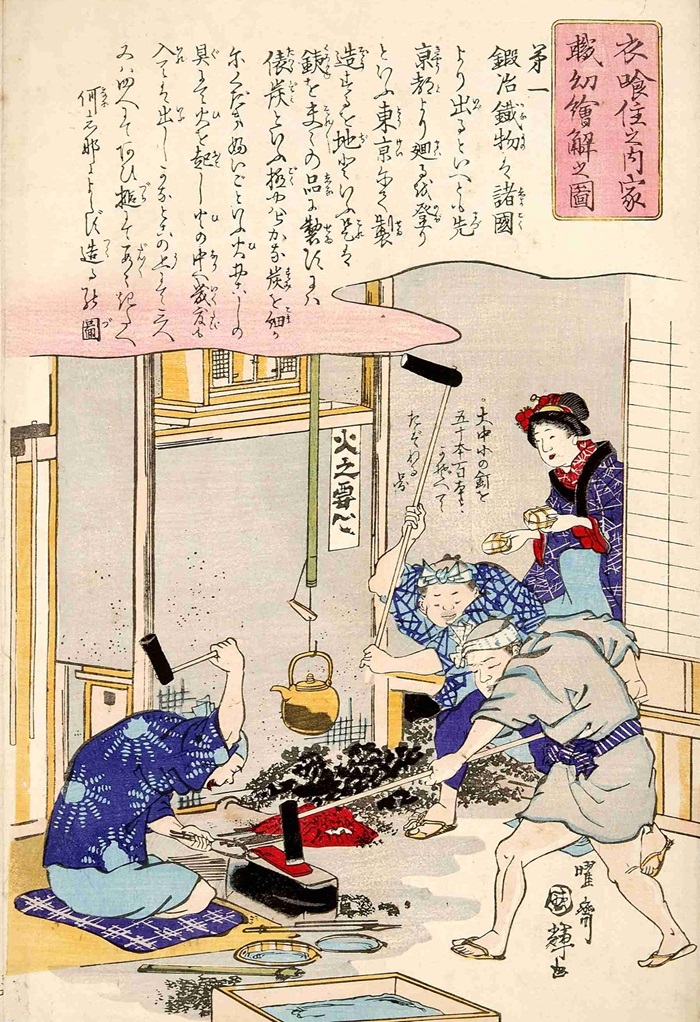
A nishikie woodblock print published by the Ministry of Education in the Meiji period for the purpose of home education in early childhood. The picture on the left depicts carpenters. In the right foreground, a carpenter is smoothing the surface of timber with a tool called a chōna. The picture on the right shows blacksmiths making nails.
- Pictorial Book of Workers: Takarabune Katsura no Hobashira
- Kaga Collection hako100-2
-
The upper section depicts carpenters, blacksmiths, casters, and sword mount makers, with the topmost tier showing “Illustrations of a Hundred Tools,” featuring a variety of carpenters’ implements. The lower section depicts a tabi footwear maker, a doll maker, a mirror polisher, and a roofer.
-

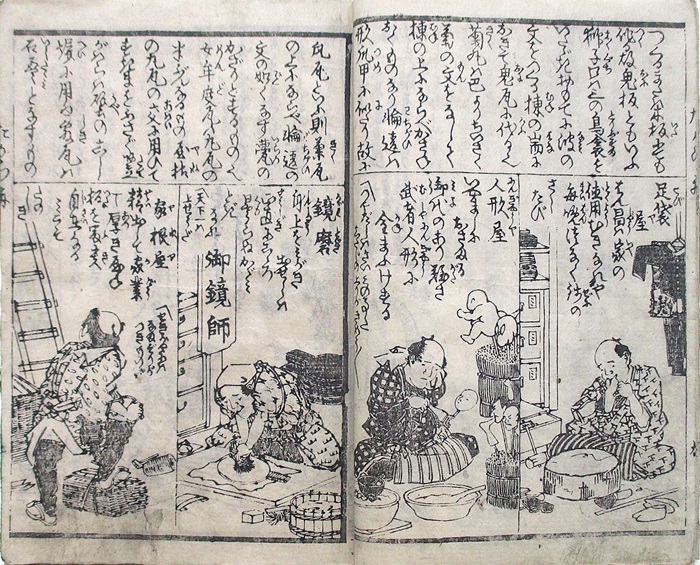
- Fun-filled Tour of Famous Places in Edo No. 41: Asakusa Onmayagashi Riverside
- Tokyo Shiryō Collection 025-C3-42
-
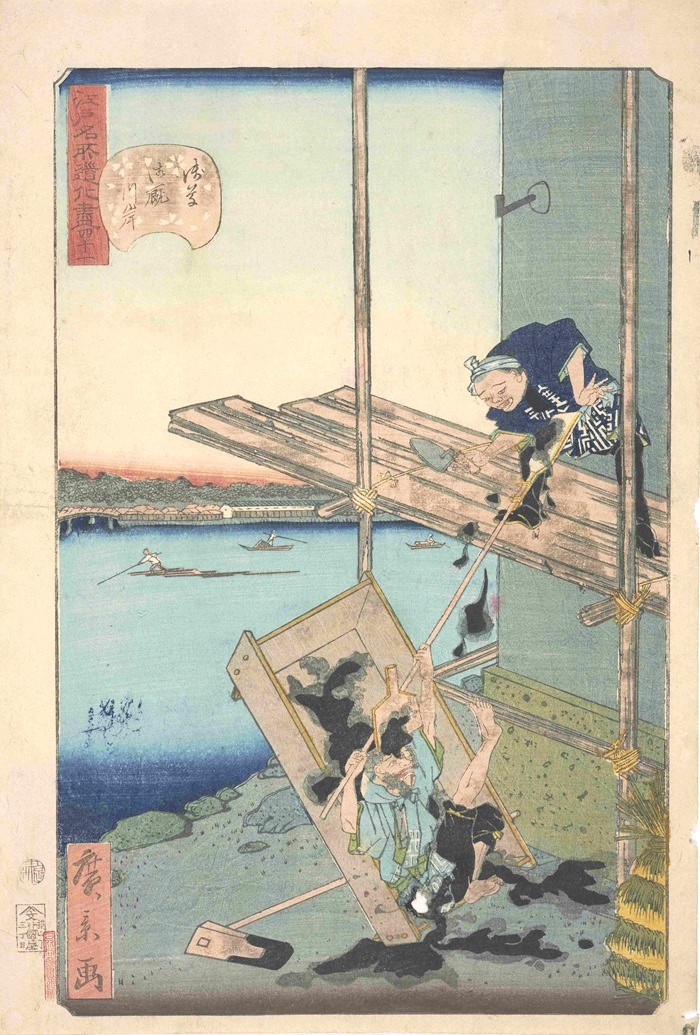
- Fun-filled Tour of Famous Places in Edo No. 37: Honjo Tatekawa Road
- Tokyo Shiryō Collection 025-C3-38
-
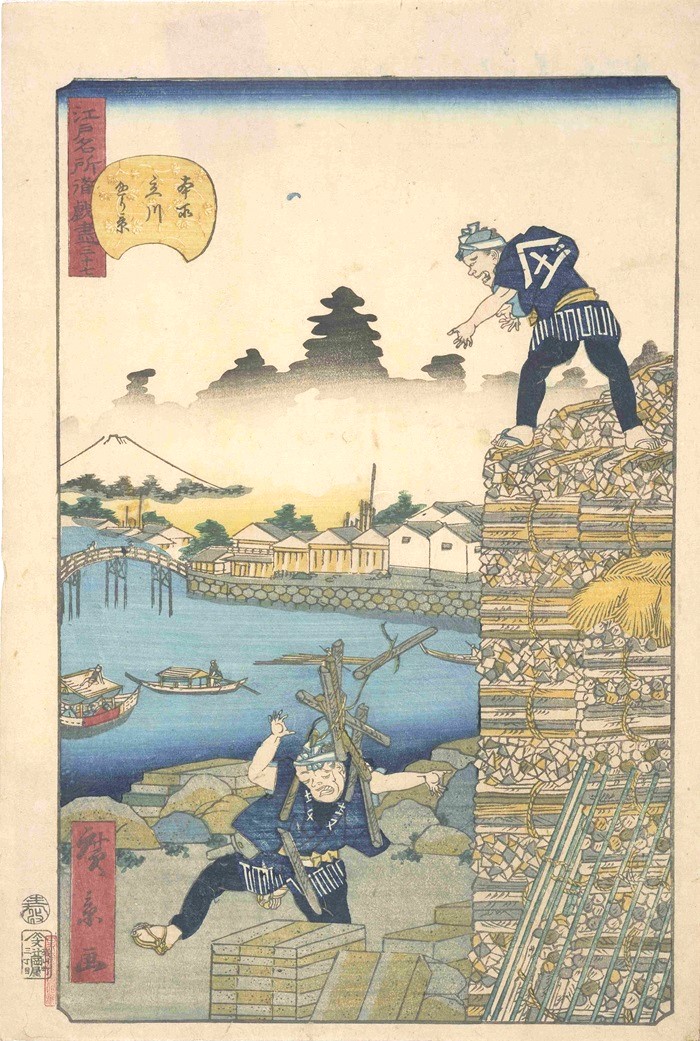
The left illustration shows plasterers at work along the Onmayagashi riverside in Asakusa, applying plaster to a wall. One of the workers on the scaffolding has just dropped his plastering board. The right illustration depicts laborers working at a lumber wholesaler.
- Contest of Imayō Poetry on Workers
- Kaga Collection 7297
-
The left illustration shows a comb maker and a well digger. The well digger is placing his ear to the ground to listen for the flow of underground water. The right illustration depicts an inkstone carver and a pipe maker. The pipe maker is using a hand drill, known as a maigiri, to craft a smoking pipe.
- llustrated Guide to Famous Places in Edo
- Kaga Collection 256-1
-

- llustrated Guide to Famous Places in Edo
- Kaga Collection 256-18
-

Geta Shinmichi was located around the present-day JR Kanda Station and was home to many shops that made and sold geta sandals. The illustration shows geta craftsmen at work.
Around what is now Azumabashi in Sumida Ward, there was a district called Nakanogō Kawaramachi, where many roof-tile (kawara) craftsmen lived and worked.
- Poetry Contest of Edo Craftsmen
- Kaga Collection 444
-
The left illustration depicts a tatami mat maker. On the mat where the maker sits are placed a measuring stick, a tatami knife, and hemp thread. The right illustration shows a stone cutter.
- Quiz
-
What is the trade of the worker shown in this picture?
- A Water carrying (mizukumi)
- B Agar making (kanten zukuri)
- C Paper making (kamisuki)
- D Preparing for goldfish scooping (kingyo sukui)
Answer: C. Paper making (kamisuki)
Kamisuki is the process of making washi or Japanese paper. The raw material for washi is plant fibers, which are first boiled, soaked in water, and then beaten to separate the fibers. A binding agent is mixed in, and the fibers are suspended in a water tank to be formed into sheets. Once dried, these sheets become paper.- Craftsmen Poetry Contest
- Kaga Collection 7295
 文化財ウィーク
文化財ウィーク